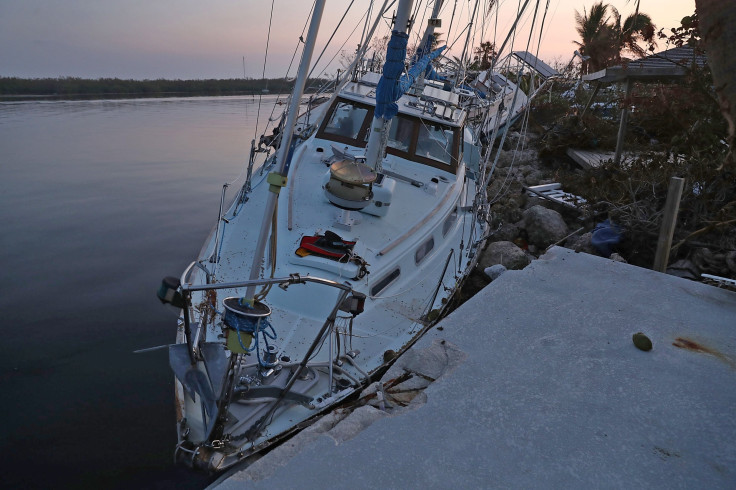Hurricane Michael Update: Category 3 Storm Could Hit Florida Wednesday

UPDATE: 5.35 a.m. EDT - According to National Hurricane Center, Michael is moving north-northwestward through the Southern Gulf of Mexico. Calling Michael “a potentially catastrophic storm”, National Weather Service in Tallahassee said the “Preparations should be completed no later than Tuesday morning.” It, however, remains a Category 1 storm with a maximum sustained wind speed of 90 mph.
Original story:
Hurricane Michael is rapidly intensifying as it enters the Gulf of Mexico and is expected to strike Florida on Wednesday, forecasters said.
According to the National Hurricane Center, it could strengthen into a major Category 3 hurricane with winds topping 111 mph before it reaches Florida’s Gulf Coast on Wednesday. It will then spend two to three days over the Gulf.
"Michael could produce three life-threatening hazards along portions of the northeastern Gulf Coast: storm surge, heavy rainfall and hurricane-force winds," the hurricane center said adding that one potential impact from the hurricane is "electricity and water will be unavailable for several days to weeks after the storm passes."
Weather Channel hurricane expert Rick Knabb warned that "Michael could be one of the worst hurricanes to ever strike the Florida Big Bend and Florida Panhandle region.”
Describing Michael as a "monstrous storm" that has the potential to be devastating to the Florida Panhandle, Florida Gov. Rick Scott on Monday declared a state of emergency in 35 counties ahead of the landfall.
"Hurricane Michael is forecast to be the most destructive storm to hit the Florida Panhandle in decades. The Panhandle and Big Bend could see winds in excess of 100 mph. Remember, this storm could grow stronger and be a Category 3 hitting our state. This storm will be life-threatening and extremely dangerous," Scott said at a press conference Monday evening.
“Never ends, but we’re all prepared and hopefully it won’t be as bad as it’s looking. It looked a couple of days ago like it was not going to be much, and now it’s looking like it could be a very big one, so we’re prepared. And good luck,” President Donald Trump said, USA Today reported.
The Federal Emergency Management Agency has gathered resources from the government to help with the preparation.
Florida State University announced Monday it would shut down after midnight Monday and remain closed for the rest of the week. Leon County schools have also canceled classes from Tuesday through Friday.
"This is a storm to definitely take very seriously. Storm preparations should be rushed to completion today and Tuesday,” the National Weather Service in Tallahassee said.
Alabama Gov. Kay Ivey too declared a state of emergency “in anticipation of widespread power outages, wind damage and debris produced by high winds and heavy rain associated with Hurricane Michael."
Oil giant BP announced it will be closing four of its production platforms in the Gulf of Mexico. "With forecasts indicating that the storm will strengthen as it moves into the northern Gulf of Mexico, BP is in the process of evacuating personnel," the company said.
Tyndall Air Force Base in Florida too ordered a mandatory evacuation of all personnel including those in base housing to avoid the storm. Hurricane Michael is the seventh one of the 2018 Atlantic hurricane season.
© Copyright IBTimes 2025. All rights reserved.





















